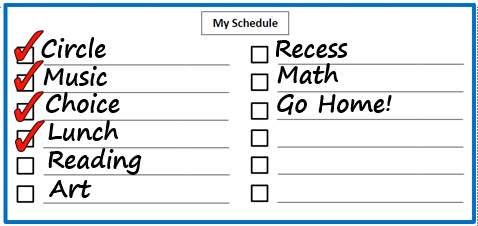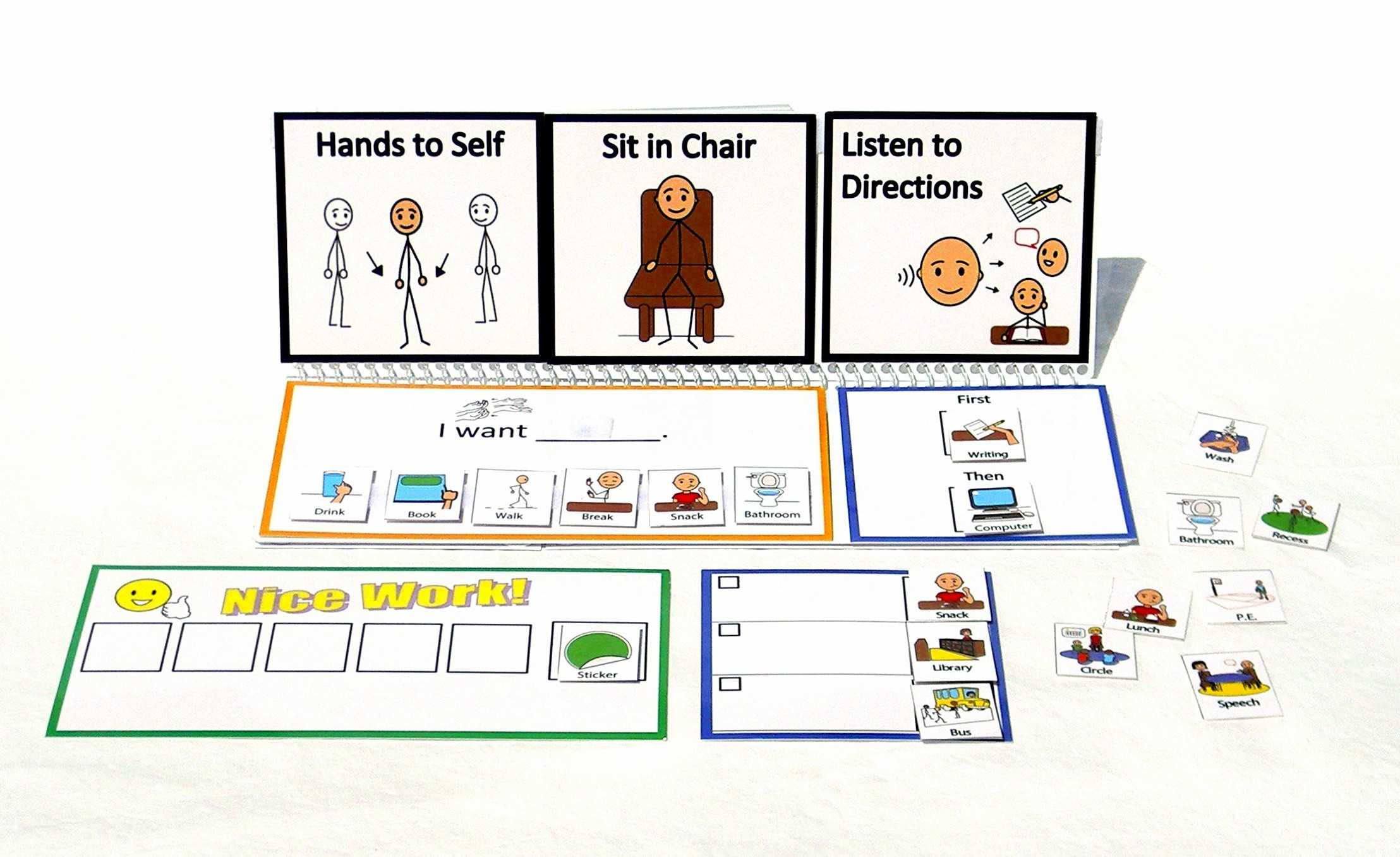Just as is it essential to explicitly share behavioral expectations so a student knows how to do something, they must know what to do. While the agenda can be shared on a schedule, all too often we forget to give ownership of the schedule to our students. If a learner is going to grow in their ability to independently navigate their day, they first must grow in independently using the resource that shows their day. On the educator’s part, this means more show and less tell.
If it is a First-Then schedule that the student uses, every time they enter into a new activity reference it, and if possible have the student point to it. Even better, have the student be the one who manipulates the pictures that go on and off of it. Doing so establishes a pattern in the mind of the learner to look for the schedule and not adults for what’s next.
When the learner has mastered the First-Then, up the complexity of having more tasks displayed and start building in the written word. If decoding is a strength, work towards just a listed schedule. To the greatest extent possible, put the job of managing the schedule on the student. They carry it, store it, check it, and mark it. If the student asks what is coming up, a simple “check your schedule” should be the consistent reply. The student who can own their schedule will be more equipped to own their day.
Being able to change in and out different schedules on one common interface such as with the Ultimate Access Card can make for quicker gains on the student’s behalf and much easier implementation on the educator’s behalf. Its portability supports consistent implementation across locations, and its multifunctioning panels support schedules as a supportive component of a well rounded program. However it works for your group, give the day to your learners. It is theirs to manage and conquer!









